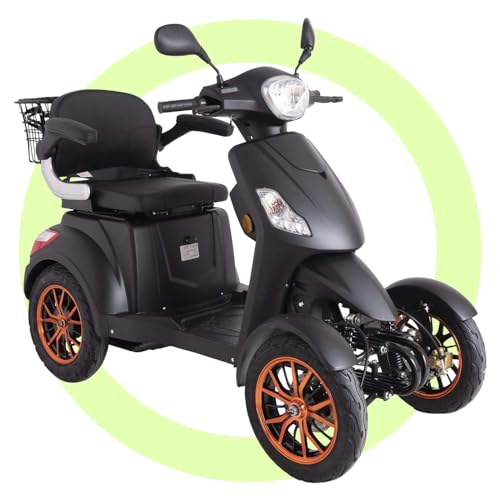Scooter Green Power
Scooters offer a fun and safe way to travel. They are also eco friendly. It's important that you do your research prior to buying one.
Scooters do not come with carbon-free emissions as they appear. They are not without cost. The mining and production processes used to produce the batteries to power electric scooter s generate significant emissions. Shipping scooters from where riders leave them to charging stations adds to their environmental footprint.
Battery Life
The battery is one of the most important components of any scooter, and it can have a big impact on how green your scooter is. When green power electric mobility scooter dies it releases toxic chemicals, which could have a massive ecological and economic impact.
Electric scooters are highly efficient in energy use, and consume just a tiny fraction of the energy that cars use when traveling the same distance. This can help reduce carbon dioxide and climate change as well as traffic congestion. The e-scooters still produce a small amount when charging. If the energy source is from renewable sources, it can make e-scooters even greener.
Additionally there are green energy mobility scooters with swappable batteries that can be used with other scooters in a fleet, which reduces the need for companies to transport them for recharging. Some companies are also testing hyper-local energy production. The grid could use the batteries' power to balance demand and supply.

If you plan on using your scooter for long excursions, consider buying a larger battery or a second that can be swapped out. This will allow you to travel longer distances without having to stop and recharge the battery every so often. This is especially important if you live in an area that experiences harsh weather conditions. It is also a good idea to recharge the battery before storing it for months or weeks at a time. If you don't do this, it could cause the battery to stop holding a charge when you require it again and can be a hassle and dangerous.
Overall, electric scooters have a much lower environmental impact than cars and other modes of transportation. They create fewer greenhouse gases that contribute to global warming, and they require less raw materials to manufacture. They can be powered by clean energy, which can reduce their carbon footprint. However, it is crucial to take into consideration the entire life of a scooter when assessing its sustainability. This includes the production, the energy required to charge it and its disposal.
Design
The design of electric scooters could have a significant impact on their green power credentials. Scooters with regenerative brake systems, for example they convert energy that would be wasted otherwise into extra battery life, which allows them to travel further on each charge. A lot of scooters are designed for shorter distances, which reduces the number of vehicle trips needed. And, unlike traditional vehicles, scooters emit no carbon dioxide during use.
It is nevertheless important to consider the environmental impacts of the entire lifecycle of an electric scooter. This includes the extraction and manufacturing of raw materials as and the disposal at the end of its life. The manufacturing of lithium ion batteries is energy intensive and can cause habitat destruction, water and soil pollution, and greenhouse gases. The transportation and mining of raw materials can have a significant effect on the environment.
The lack of durability is another major issue with scooters. The average scooter lasts only few months on the streets before it is discarded. This could require scooter companies to mine more aluminum and engage in more shipping and other resource-intensive activities. Additionally, since the majority of scooters are rented instead of owned, the scooters must be collected and transported to recharge stations (often by vehicles) when they run out of juice.
Scooters may contain hazardous wastes that can pose a risk to the environment and public health. If they are not properly recycled the waste could end up in landfills or rivers which could pose a risk to people and wildlife.
Scooters are more beneficial to the environment as a whole than conventional vehicles. However, there are still some issues that need to addressed before they can be deemed totally environmentally friendly. If all scooters were made of 100% recyclable materials and if the energy they ran on was sourced from renewable sources, then they would be a carbon-free method of transportation.
Maintenance
The cost of an electric scooter is less than a conventional vehicle. However, it still requires regular maintenance. The main element is the battery pack. It must be recharged regularly and replaced at the end of its life. The speed controller is a factor as well. When this is faulty it can affect the performance of the scooter.
If the scooter stops or stops functioning when riding, it usually indicates that the battery pack is faulty. It could also be due to a fuse or a battery charger that isn't functioning properly. Check that the charger's indicators are green (charging) and not red (off). Even if you don't intend to use the scooter, it is recommended to charge it every time it is stored.
Another common issue is a defective normally closed brake lever switch. To test this, disconnect the wire from the brake switch and connect the two terminals to the controller connector, where the wire was unplugged. If the scooter is constantly running the switch might be faulty.
Scooter services send people out to drive trucks and cars all the time, and they bring back electric scooters that have run out of juice. This helps them keep their fleet in good condition. This allows them to charge their batteries for the next ride. However, a lot of people do not have this option and must replace their scooters if they are unable to recharge their batteries when on the move.
